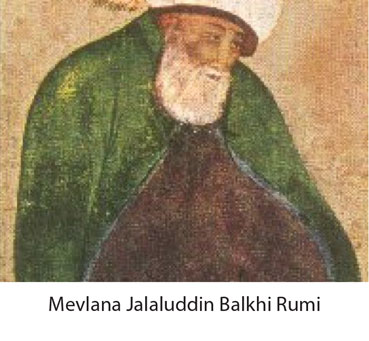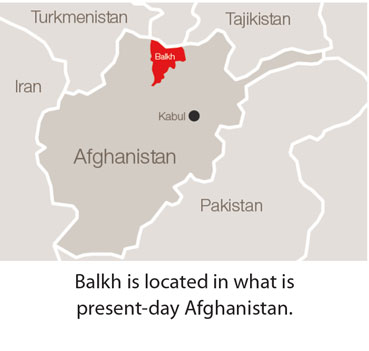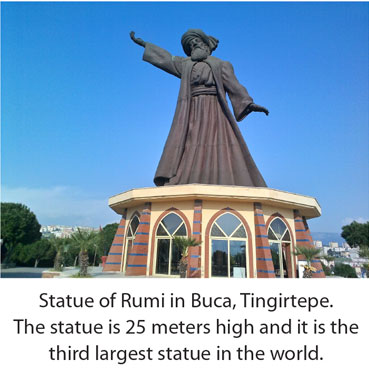
Rumi’s Life: A Brief History
Rumi lived from 1207 to 1273
Rumi is also referred to as Mevlana which means “Our Master” in Turkish, and is often formally referred to as Mevlana Jalaluddin Balkhi Rumi. He was born on Sept. 30, 1207, in Balkh, present-day Afghanistan. His father, Bahaduddin Walad, was an Islamic theologian, teacher and mystic. When Mongols invaded Central Asia, between 1215 and 1220, Rumi left Balkh with his family and a group of disciples. The migrating caravan traveled extensively in Muslim lands. After a pilgrimage in Mecca, they eventually settled in Konya, located in present-day Turkey.
Rumi’s Career
Rumi was a disciple of Sayyed Burhan ud-Din Muhaqqiq Termazi, one of his father’s students. Under the guidance of Sayyed Termazi, he practiced Sufism and acquired extensive knowledge about spiritual matters and secrets of the spirit world. After the demise of Bahaduddin, in 1231 A.D., Rumi inherited his father’s position and became a prominent religious teacher. He preached in the mosques of Konya. By the time Rumi reached the age of 24, he’d proven himself as a well-informed scholar in the field of religious science.
Turning Point of Rumi’s Life
Rumi was in his thirties, already a teacher and a theologian, when in 1244 A.D., he came across a wandering dervish named Shams ud Din Tabrizi (“the Sun of Faith”). For years, this religious rebel had traveled from town
to town quizzing every scholar he met seeking a soul to share his spiritual learning with. Upon first meeting the two exchanged a series of questions and answers about God and spirituality. The meeting proved to be a turning point in Rumi‘s life and they became very close friends – inseparable mates – like two mirrors reflecting and confirming each other. The experience had a profound impact on Rumi, and ecstatic verse flowed from him following this encounter. Rumi became dissatisfied with books since they only had a concept of God. But Shams had found God in every thing, in simple, everyday experiences – which filled Shams with an ecstasy that he freely shared unconditionally with Rumi – something that Rumi desperately wanted!
Shams eventually went to Damascus, were he was allegedly killed by the students of Rumi who were resentful of their close relationship. Rumi expressed his love for Shamsuddin and grief at his death, through music, dance and poems. For nearly ten years after meeting Shamsuddin, Rumi devoted himself to writing ghazals. He made a compilation of ghazals and named it Diwan-e-Kabir or Diwan-e Shams-e Tabrizi. Later in life, Rumi befriended one of his favorite disciples named Hussam-e Chalabi. Rumi spent most of the later years of his life in Anatolia, where he finished six volumes of his masterwork, the Masnavi.
Death
Rumi died at the age 66 on Dec. 17th, 1273, in Konya, within the Seljuk Empire’s territory (currently Turkey). He was buried beside his father in Konya. A tomb named Mevlana Mausoleum was built in Konya – the Yeşil Türbe (the Green Tomb), commemorating Rumi as a great Sufi poet. It consists of a mosque, dervish living quarters and a dance hall. His epitaph reads: “When we are dead, seek not our tomb in the earth, but find it in the hearts of men.” The sacred site is visited by his admirers coming from different parts of the world. Upon his death, his followers and his son Sultan Walad founded the Mevlevi Order, also known as “The Order of the Whirling Dervishes”, famous for the Sufi dance known as the Sama ceremony. The Mevlevi Order continues to this day to draw pilgrims from all parts of the Muslim and non-Muslim world.


